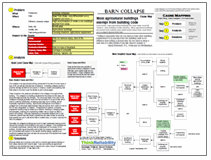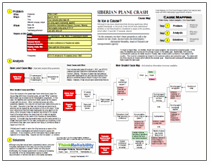By Kim Smiley
A recent study found that lead poisoning remains a significant hurdle to the recovery of the California condor population, one of the world’s most endangered species. Scientists reviewed blood samples taken from wild California condors between 1997 and 2010 and found that many birds have dangerously high levels of lead in their bodies. Nearly half of the birds had lead levels that were high enough that they could have died without treatment.
 This issue can be analyzed by building a Cause Map, a visual root cause analysis. The first step in beginning a Cause Map is to determine the impact to the overall organization goals. In this example, the environmental goal is impacted because an endangered species is threatened. To continue building the Cause Map, “why” questions are asked and the answers are added to the Cause Map to show the cause-and-effect relationships between the things that contributed to the issue. To view a high level Cause Map of this issue, click “Download PDF” above.
This issue can be analyzed by building a Cause Map, a visual root cause analysis. The first step in beginning a Cause Map is to determine the impact to the overall organization goals. In this example, the environmental goal is impacted because an endangered species is threatened. To continue building the Cause Map, “why” questions are asked and the answers are added to the Cause Map to show the cause-and-effect relationships between the things that contributed to the issue. To view a high level Cause Map of this issue, click “Download PDF” above.
In the case of California condors, the species is threatened because the birds are ingesting lead and it’s dangerous. Lead is dangerous because it is a poison that can cause illness or death. The birds are ingesting lead because they eat a large number of animals and some of the animals contain lead.
There is lead in some of the animals because California condors will eat gut piles and carcasses left behind by hunters and these animals may contain fragments from lead bullets. Additional causes are the fact that lead bullets are very common and that hunting is allowed in condor country. This is caused in part because condors have large habitats because of their large range. Condors are huge birds with wingspans of nearly 10 feet and they must travel long distances to find the large amount of food they require.
Determining the best way to prevent lead poisoning in condors is a difficult question for scientists. Part of the problem is that a very small amount of lead can cause dangerous lead levels in a condor. A single bullet fragment can be deadly. The short term solution is to treat the birds for lead poisoning by feeding them calcium-based drugs that bind with lead and remove it from the birds. One solution that has been tried is a California law banning lead bullets in the areas populated by condors, but the study found that it has had little impact in lead levels. The issue of how to deal with the California condor lead poisoning issue without extensive ongoing human intervention and medical treatment remains open.









